German Beer: Your Guide to the Best Beers & History

We take pride in providing authentic travel recommendations based on our own experiences such as unique images and perspectives. We may earn a commission when you purchase a product or book a reservation. Learn more ›
Written by Kyle Kroeger
As with many German industries, the beer brewing industry in Germany produces some of the finest German beer with impeccable craftsmanship to the highest standards. Germans take their beer so seriously that they created the world’s oldest food law, the beer purity law ‘Reinheitsgebot,’ which decrees beer is to be made with nothing other than yeast, water, hops, and malt.
When you think about beer in Germany, it’s easy to imagine a few brands synonymous with the country. But as any true connoisseur knows, there’s more to German beer than just a simple lager or even the maltier bock beers. Many types of beer found in Germany are brewed nationwide, each with its history and taste.
As someone who loves all things German culture and absolutely the beer, I’ve got you covered with all my experiences from visiting several regions of Germany as well as several iconic beer halls. You’ll find nearly all the photos below are my very own from my experiences in this lovely country.
If you’re planning a trip to the land of Oktoberfest or want to try something new at your local bar, these different types of beers will help expand your horizons when it comes time for another pint.
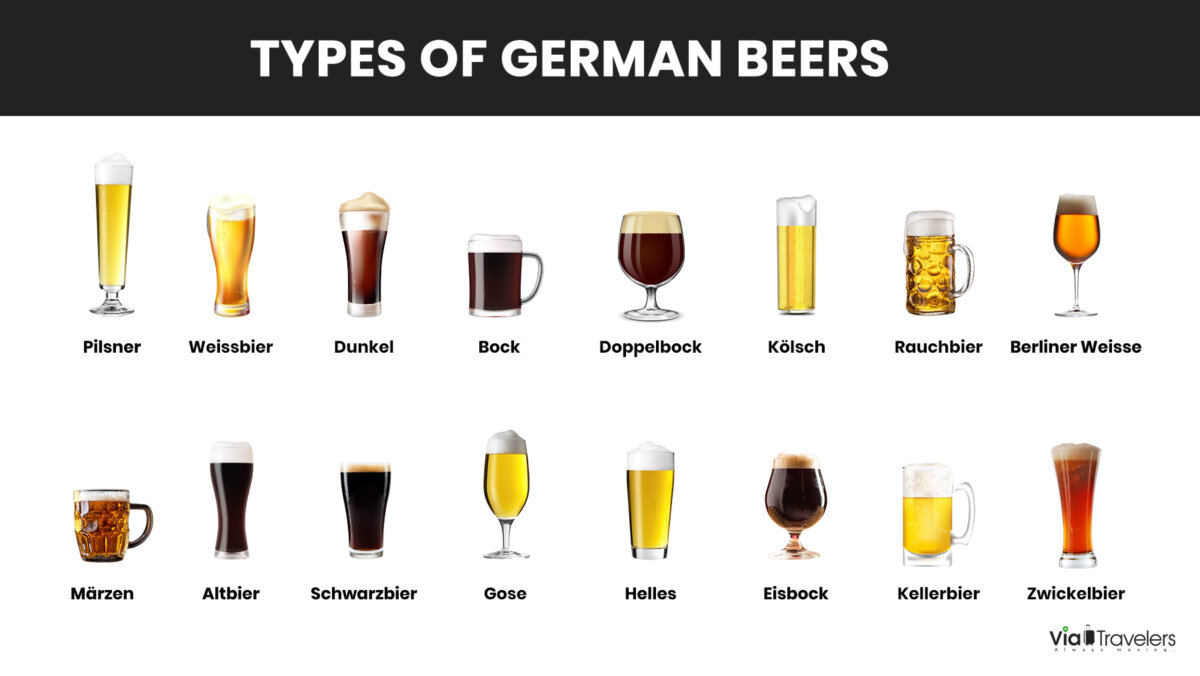
Different Types of German Beers
1. Dunkel
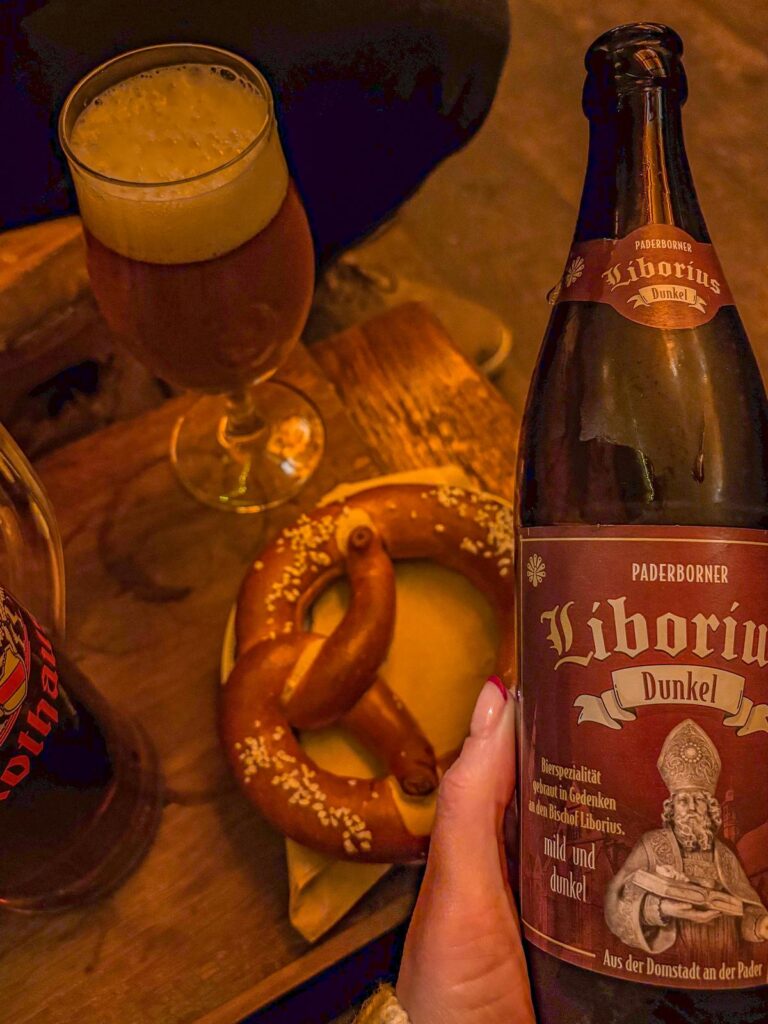
Dunkels are dark reddish-brown beers created by having fewer hops than other types of beer. They also have a higher alcohol content due to their extended fermentation process and use of more malt than different types of beer.
The Dunkel is an ancestor to the modern-day lager and is thought to have first been brewed in the 12th Century by the Benedictine monks in Munich, Southern Germany. One of the most popular types of modern-day Dunkel is Warsteiner Dunkel.
Dunkels can be served at room temperature or chilled. When served at room temperature, drinkers can appreciate their full flavor and the types of malts they are made with. When Dunkels are served ice cold, the hops and types of malt within them become masked by a stronger focus on their alcohol content.
See Related: Best Reasons To Visit Germany: Why You Need to Go
2. Helles
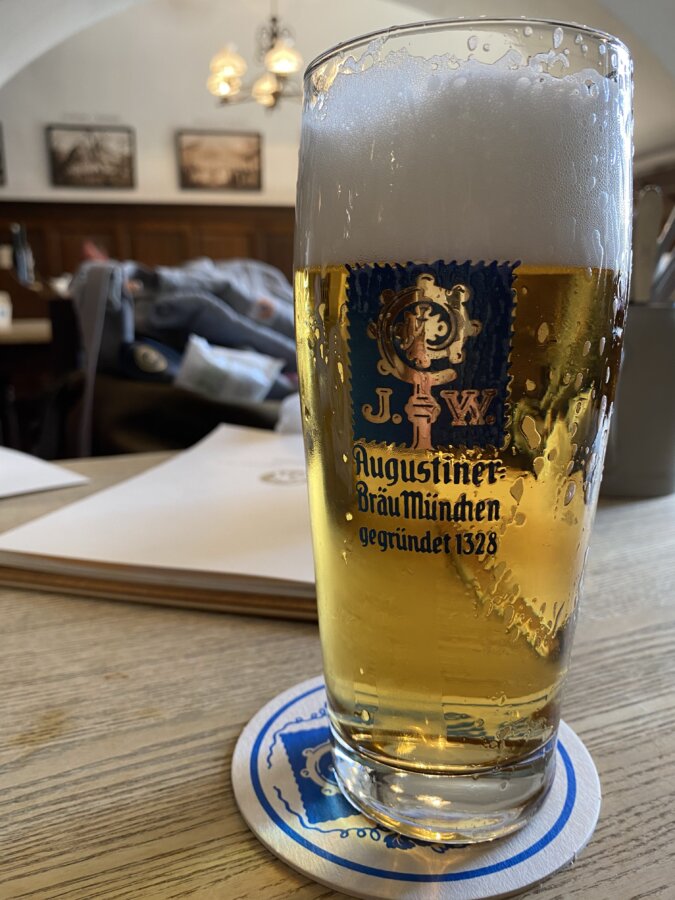
This type of beer is yellow to light brown, has a sweet aftertaste, and can have fruity notes due to the malts used in the brewing process. Helles lager was made when it was illegal for Saxony brewers to produce beer with higher alcohol content.
In order to get around this legislation, honey-type malts were added to the beer to give them a malty taste. After this type of beer was created and became popular, it was legalized for types of brewers in Saxony to produce types of beer that had higher alcohol content because drinkers liked this new style.
They have a light-brown color with a type of malty taste to them, and they are served ice cold. Different breweries make it by using various malts at different times to add nuances to the beer they make.
See Related: Best German Food to Try | Traditional Types of Food
3. Berliner Weisse
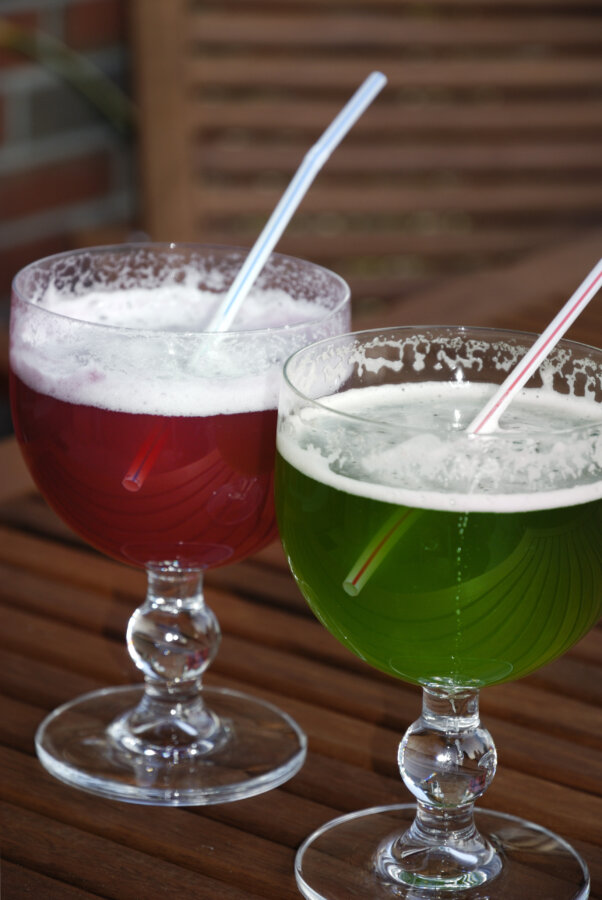
Berliner Weisse is a sour wheat beer that originated in Berlin, Germany. It is light and effervescent, with a dry taste that makes it refreshing for summertime drinking. The cloudy appearance indicates its high carbonation level and low alcohol content, which can be served at around 3%.
Berliner Weisse’s tartness may come from lactic acid bacteria or other sources (such as woodruff syrup). It is often served with raspberry or woodruff syrup (an herbal syrup made from an herbaceous plant) to balance the sourness and lemon slices drenched in salt water. These ingredients help cleanse your pallet between sips to enjoy each flavor more fully.
If you would like to incorporate Berliner Weisse into a meal, it’s known to go quite nicely with ceviche or spicy foods like fajitas to compliment the sour flavor.
See Related: What is Germany Known For?
4. Pils or Pilsner
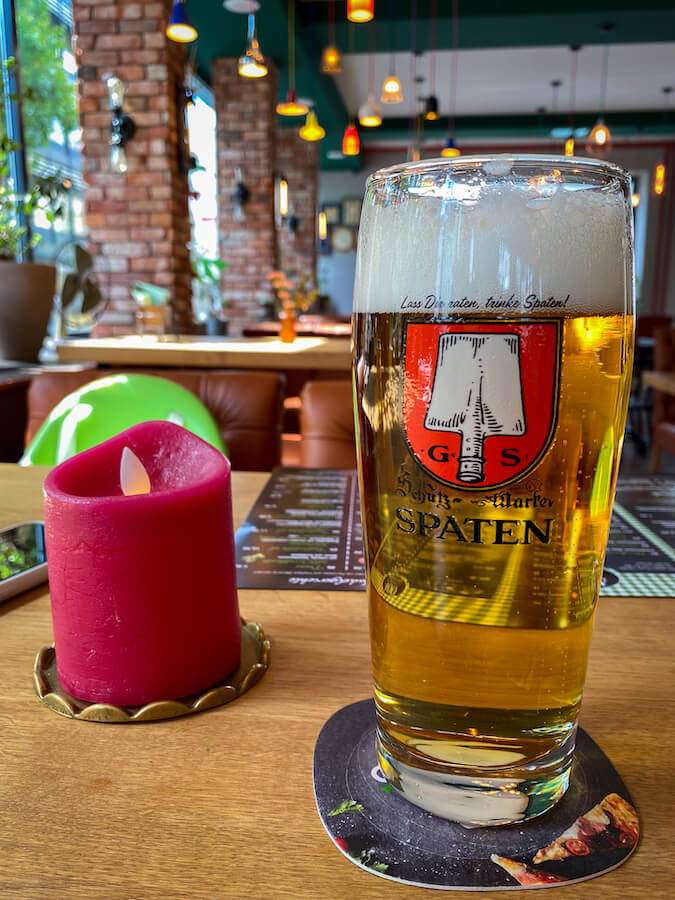
These types of beer have a bitter aftertaste and are produced using hops that were also introduced into Germany from abroad in the 19th Century.
The most popular types of German pilsner are Bitburger Pils and Warsteiner Pils. They tend to be drinks for locals to enjoy during sporting events.
German pilsners are light, golden in color, and have a clean, crisp taste. They are light and refreshing with a low to medium bitterness. German Pilsners are considered “session beers,” meaning you can drink several without feeling too full or hungover the next day.
5. Weißbier or Weissbier
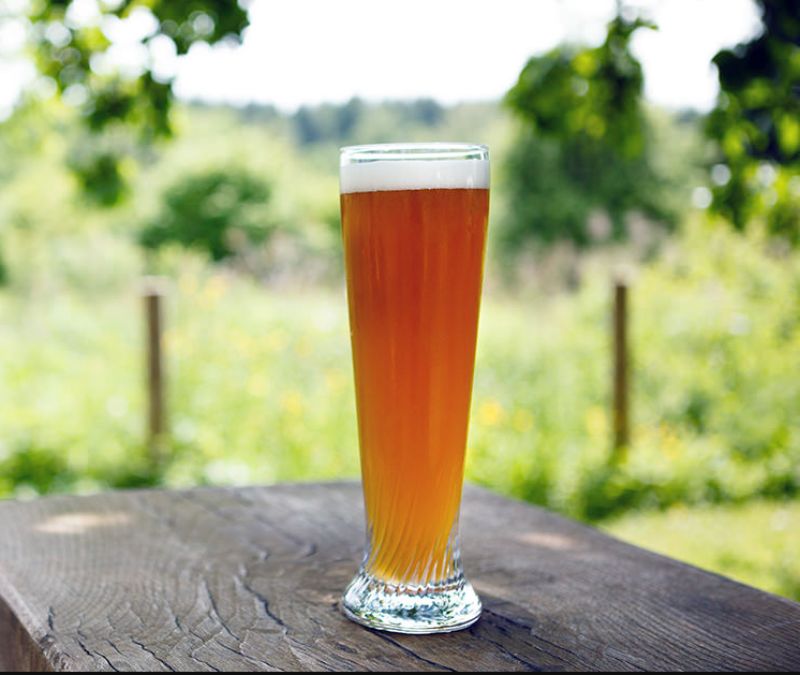
One of Germany’s most famous types of beer is Weissbier (Wheat Beer), and its origins date back thousands of years. This is a wheat beer brewed with more wheat than malted barley, which tastes like banana bread.
But Weissbier almost ended in the early 1960s after a century of struggle for popularity. However, it had an almighty bounce back during the mid-60s when consumer taste drifted towards it once more, and it’s now the most popular style of beer in Bavaria with a worldwide fandom.
It was invented by the brewing engineer Josef Groll in Bavaria. The German term for “white beer” comes from German terms relating to wheat: Weiß and Bier, which is German for “beer.” This sweet beer has distinct flavors that can be easily enjoyed during summer.
Hundreds of restaurants all over Germany serve Weissbier, and it pairs quite well with seafood dishes or a light summer salad.
See Related: Best German Street Food You Need to Try
6. Rauchbier
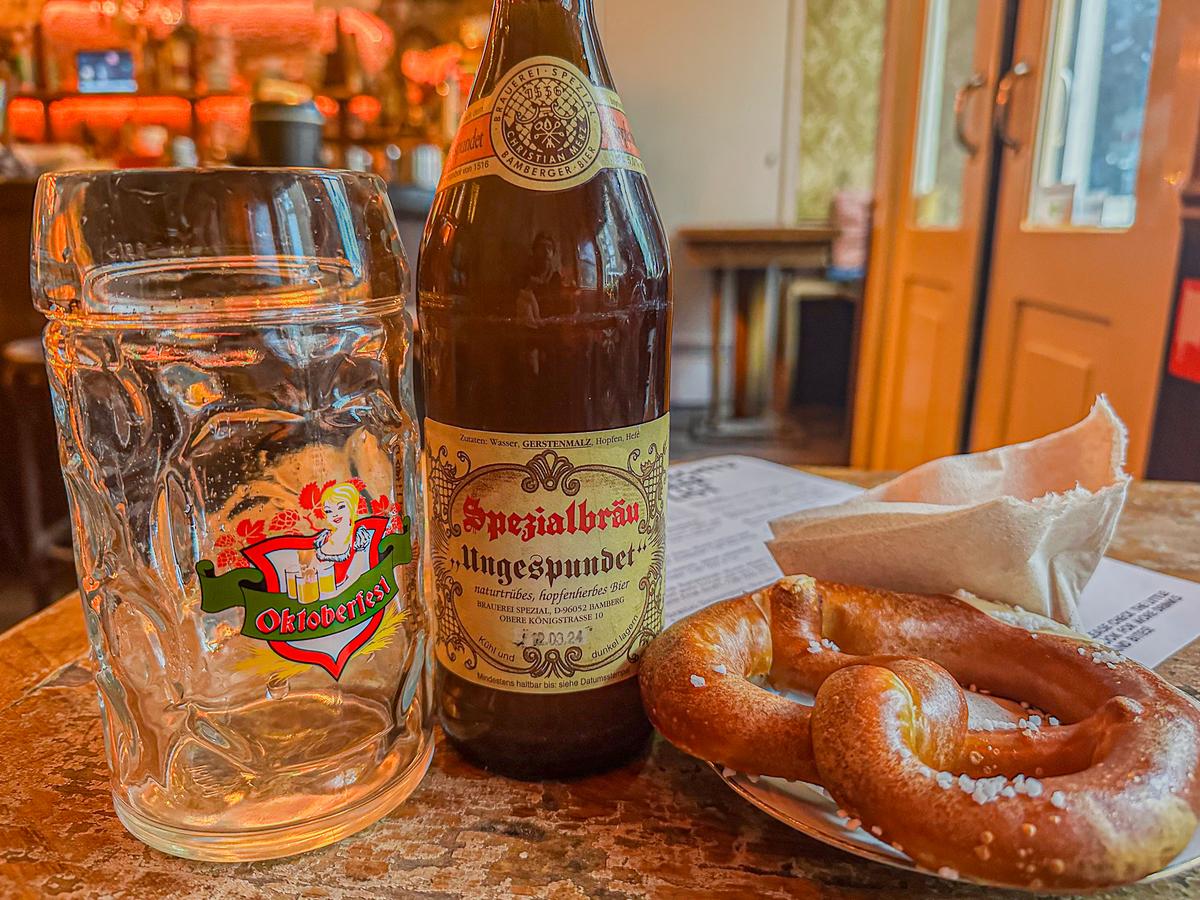
Whenever I visit Germany, I have to get a Rauchbier. It’s a style of lager with a distinctive smoky flavor due to the malt’s drying process over an open flame.
It’s an acquired taste, but I think it’s one of Germany’s most unique styles. You can find excellent Rauchbier from breweries like Schlenkerla and Spezial, located in Bamberg.
The city of Bamberg itself is a wonderful spot to visit. If you are interested in getting the full experience of a Rauchbier, tours are available to see how this smoky lager is made. Moreover, staying at the highly rated Pretti Apartments slap bang in the city center is a great shout for easy access to the many local pubs for easy Rauchbier sampling.
See Related: Things to Do in Bamberg, Germany
7. Bock
Initially from Einbeck, Bock beers have a rich maltiness and a low hop profile, perfect for those who prefer a less hoppy. If you want to find a Bock beer when browsing the shelves, look for a billy goat on the label, as it’s a common symbol associated with Bock beers!
Bock first appeared on the scene in the early 14th Century in Einbeck. But the original style of this beer was lost when the town went through destruction by fire and war. However, Munich revived the style in the 16th Century, leading to the popular styles today.
There are various sub-styles of Bock beers, like Maibock, Weizenbock, and American Bock. There’s also the popular Doppelbock and Eisbock.
See Related: Most Famous Historical Landmarks in Munich, Germany
8. Doppelbock

The Doppelbock is a much more robust version of traditional German bock beers with a much stronger flavor. It was first brewed in Munich by Paulaner monks and had a rich, malty taste with notes of caramel, chocolate, and, sometimes, dark fruits.
When in Germany, don’t forget to try some famous Doppelbock brands like Paulaner Salvator, Ayinger Celebrator, or Weihenstephaner Korbinian.
Doppelbock is best enjoyed with rich meals like beef stew or pork, which complement the rich and salty flavors. Alternatively, it also goes very well as a nice caramel dessert!
See Related: Best Parks in Munich, Germany to Visit
9. Eisbock
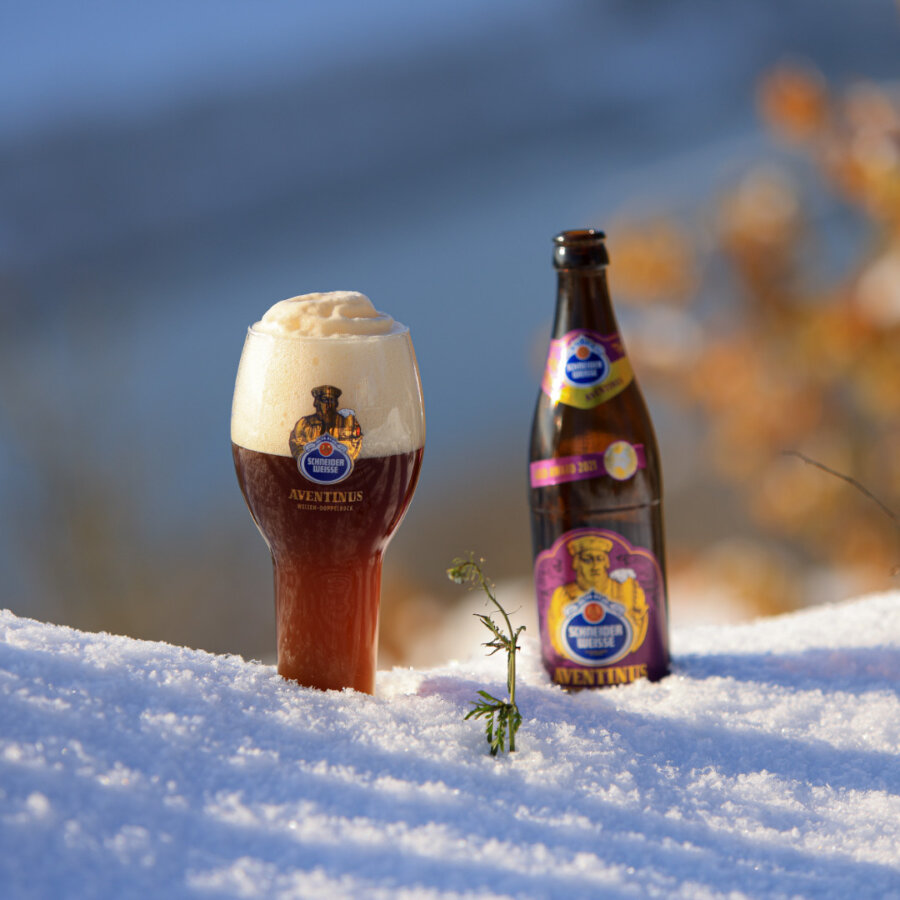
Eisbock is another substyle of bock beer. It’s a strong style made by freezing a doppelbock and removing the ice, which concentrates the flavor, aroma, and alcohol content.
If you’re up for trying something intense and flavorful, give this style a shot. Schneider Weisse Aventinus Eisbock and Kulmbacher Eisbock are excellent examples of this beer style.
The Schneider Weisse Bavarian brewery in Munich brews Aventinus Eisenbock. Since Munich is the hot spot for most breweries in Germany, it would be well worth taking a brewery tour to learn more about some famous and tasty Bavarian beer.
10. Gose
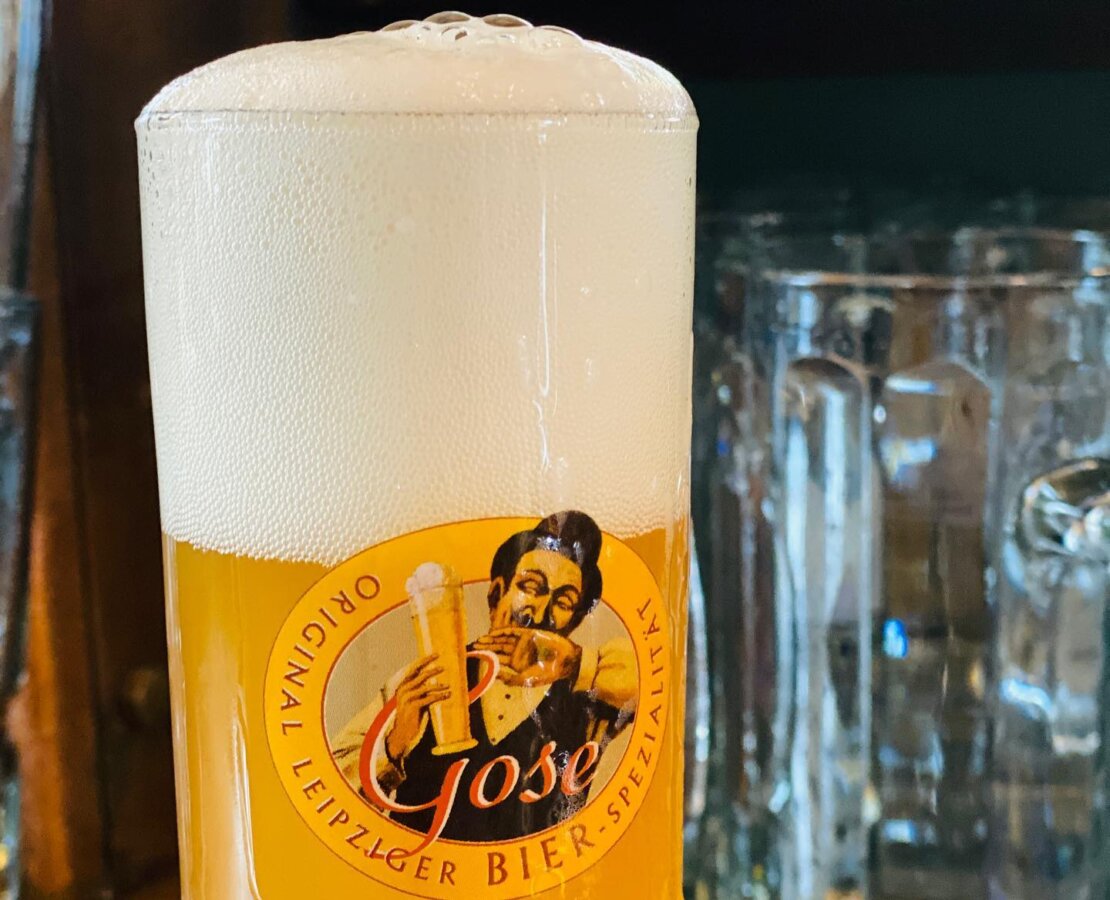
Gose is a style of wheat beer that I found pretty refreshing during my travels. It’s brewed with coriander and salt, giving it a tart, slightly salty taste.
This style of beer originates from the picturesque German town of Goslar. Popular for its stunning medieval architecture, you might be interested in a stay at Hotel Niedersaechsischer Hof in Goslar Old Town to learn more about the hometown of Goseo, be adjacent to Cologne in the city of Düsseldorf.
It’s one of my favorite German beers.
While its origins are from a humble small town, Gose beer has gained popularity all around Germany. If you want to try this wheat beer, I highly recommend Ritterguts Gose or Bayerischer Bahnhof Original Leipziger Gose.
See Related: Things to Do in Lower Saxony
11. Kellerbier
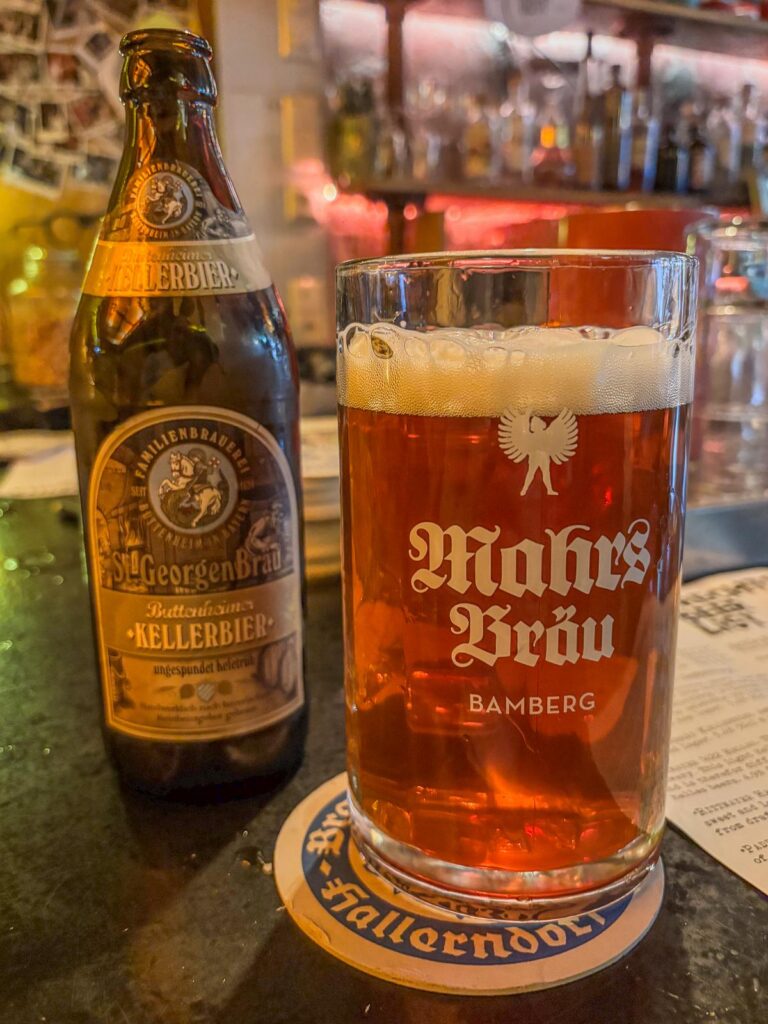
I’ve come to appreciate the smooth and robust flavor of Kellerbier, an unfiltered German malty lager. It dates back to the Middle Ages, and it features a hazy appearance due to the presence of ale yeast.
The name ‘Kellerbier’ translates to ‘cellar beer’ in German. This refers to the cold conditions under which this beer is crafted and the cool cellar conditions under which it should be stored.
Although it’s similar to Zwickelbier, it does have its distinctive taste. To experience the essence of Kellerbier, try St. Georgenbräu Kellerbier, Mahr’s Brau Ungespundet Hefetrüb, or Tucher Kellerbier. This beer serves quite well with mildly spicy Mexican or Indian dishes.
12. Zwickelbier

Zwickelbier, pronounced ‘tzv-ickle,’ is another of my favorite beer styles. It hails from Germany and is a sub-set of Kellerbiers. It is an unfiltered lager with a hazy appearance and a smooth, slightly grainy taste.
This beer gets its name from the valve, or ‘zwickel,’ found on the cask from which the beers were tapped and sampled.
Brewed with both top and bottom-fermented yeast, Zwickelbier is often served directly from wooden barrels. Some famous examples include Kulmbacher Mönchshof Kellerbier, Greif Bräu Zwick’l, and Löwenbräu Buttenheim Kellerbier.
13. Kölsch or Kölschbier

Kölsch originated in Köln, the German name for Cologne. Adding other ingredients to gruit beer is not uncommon, but German Kölsch brewers incorporated a new twist on the process.
They used two types of roasting instead of hops to give it its unique flavor and golden color. The taste is similar to the typical sweets shops you might find in Germany but more mellow with flavors of malt and sugar.
The particular style of Kölsch can only be found in one place: Cologne (Köln). In order to fix the mead’s lack of color, brewers from Köln added Coke and burnt sugar. Adding flavorings similar to those found in German candy shops gave it a unique flavor profile different from the other wines’ roasts before it.
Yeast is naturally present in gruit beers, but adding yeast creates more carbonation. In German gruit beer recipes, you will often find wheat as an ingredient, which is common in Germany and has been used for centuries.
See Related: Best Breweries in Cologne, Germany
14. Marzen
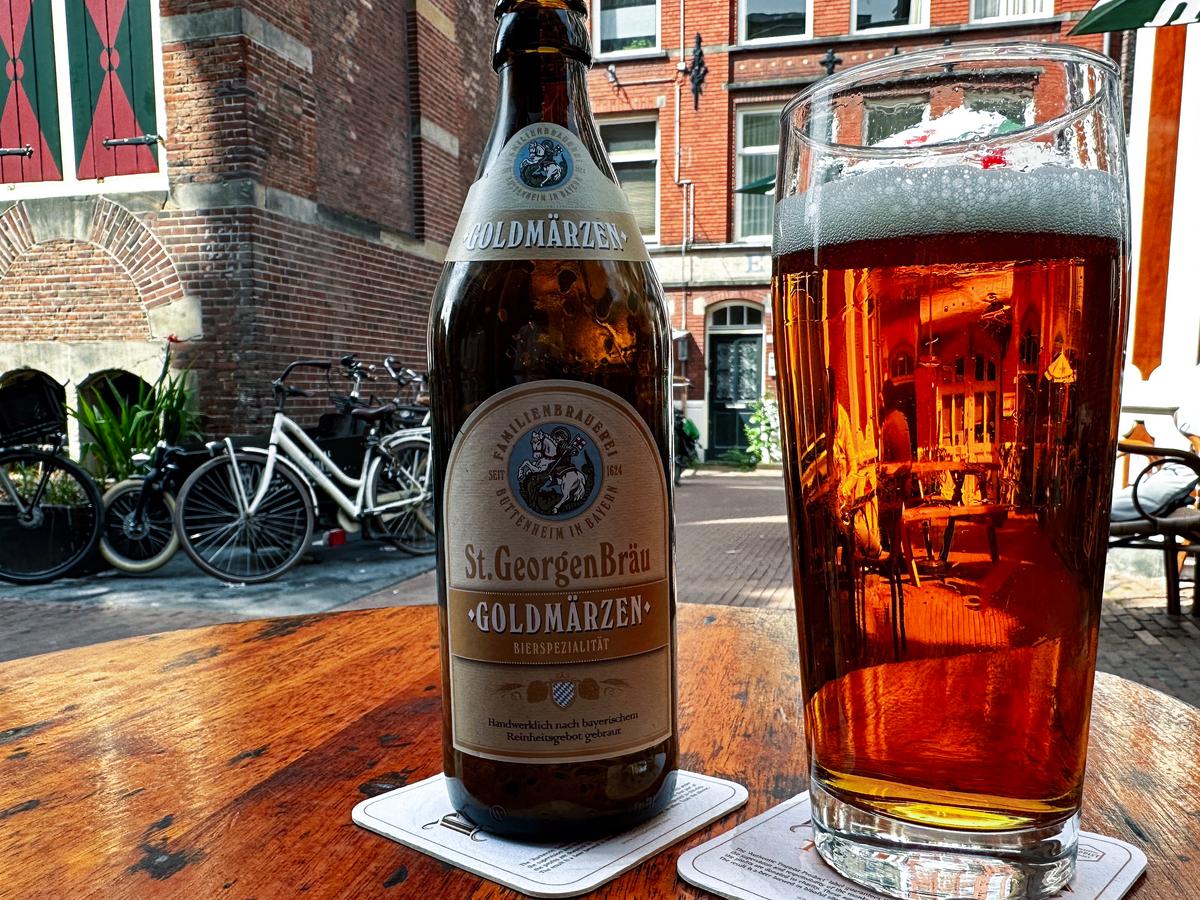
Marzen (from Latin) comes from Munich. It is made from pale or amber-flavored malt and caramel malts. Marzens are brewed with varying degrees of strength, with the traditional Marzen hailing from Munich being about 6% alcohol. Marzens are typically light-bodied, refreshing, and slightly sweet with a complex malt flavor.
The name “Marzen” comes from the German word “Märzenbier,” which means “March beer.” The style was traditionally brewed in March to celebrate the end of winter and the beginning of spring. Nowadays, it’s brewed all year long.
But Marzen shines the most as a special Oktoberfest beer that is enjoyed to celebrate the tradition of the excellent German culture of combining great beer and lively festivals.
See Related: Best Hotels in Munich, Germany
15. Schwarzbier
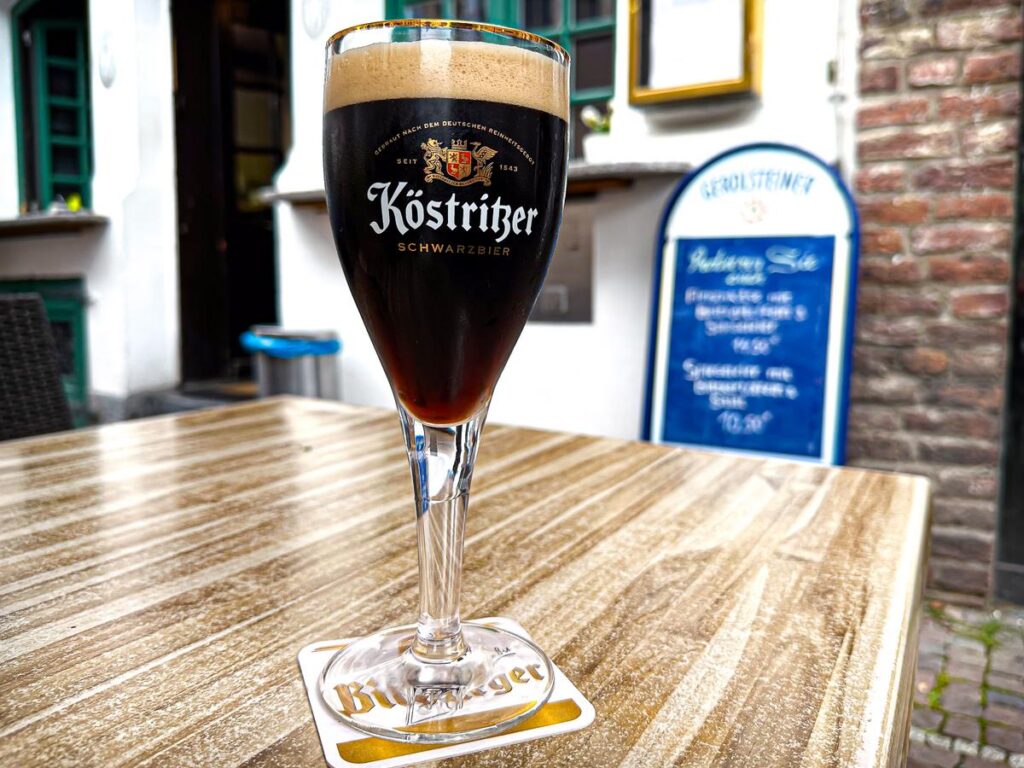
Schwarzbier is a German lager whose name comes from the word “black.” It’s known for its typically dark brown color and malty flavor, and it’s brewed with roasted malts to give it an almost coffee-like taste.
Many believe this type of black beer to be the oldest continually brewed style in the world, making it thousands of years in the making. In the 16th Century, Kulmbacher Kloster monks brewed the famous Kulmbacher Kloster Mӧnchshof Schwarzbier, which is still brewed to this day. One of the most popular exported products is Köstritzer Schwarzbier (pictured above).
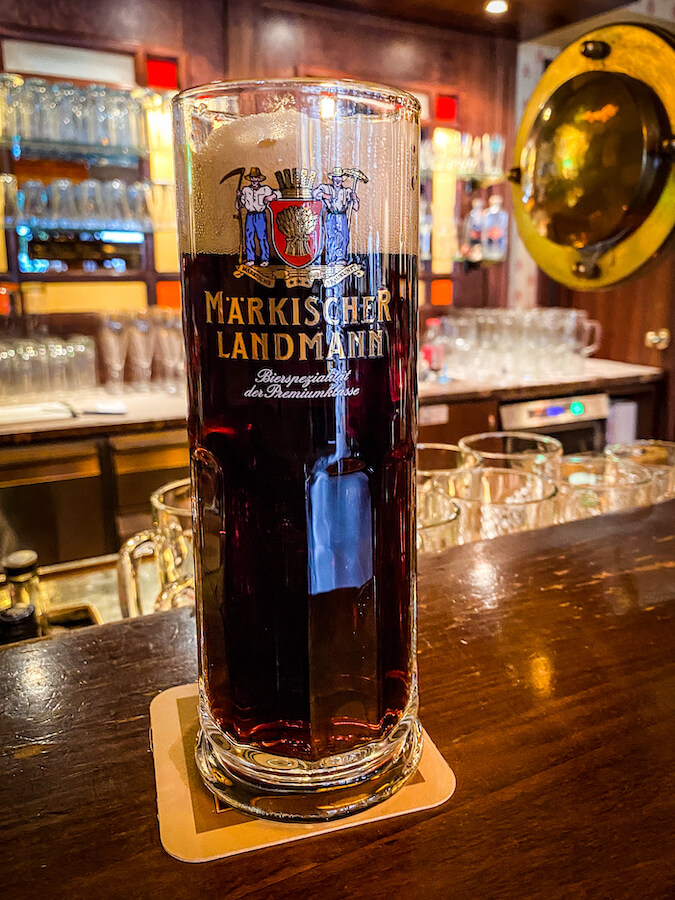
Schwarzbier did face some turbulence in popularity, though, when more advanced malting processes arrived on the scene. Pale malts, like Pilsner, saw a boom while dark beers became less sought after. But the Schwarzbier survived and is a popular choice to serve with a hard cheese like Parmesan or Gruyere.
See Related: German Wine: History & Different Types
16. Altbier

Like Kolsch, Altbier is only brewed in a specific region of Germany, which happens to be adjacent to Cologne in the city of Düsseldorf.
It’s one of my favorite German beers due to its unique hybrid blend of ale and a lager sporting a caramel color. Given the lager components in the brewing process, it still has a clean, refreshing finish.
Altbier is one of the freshest beers in the world, and there’s no better place to experience this than in Düsseldorf. It’s very easy to find plenty of great breweries in Düsseldorf that serve Altbier fresh from the keg.
See Related: Best Breweries in Düsseldorf, Germany to Try
17. Gesmondner

Gesmondner is a type of beer made in Bavaria since 1821. It is served with a slice of lemon so the drinker can get some citrusy taste from German mead.
As the name Gesmondner suggests, this German gruit was made to be consumed during hot German summers. Due to this, its alcohol content is relatively low at about 2%.
Gesmondner is now produced by only one brewery, Salm-Salm Bräu. The original brewery from which it hails is called Brauerei Hübsch. While the brewery may have changed, the recipe of this summer winner hasn’t changed much over the years, so you can still enjoy the original authentic taste.
History of Beer in Germany
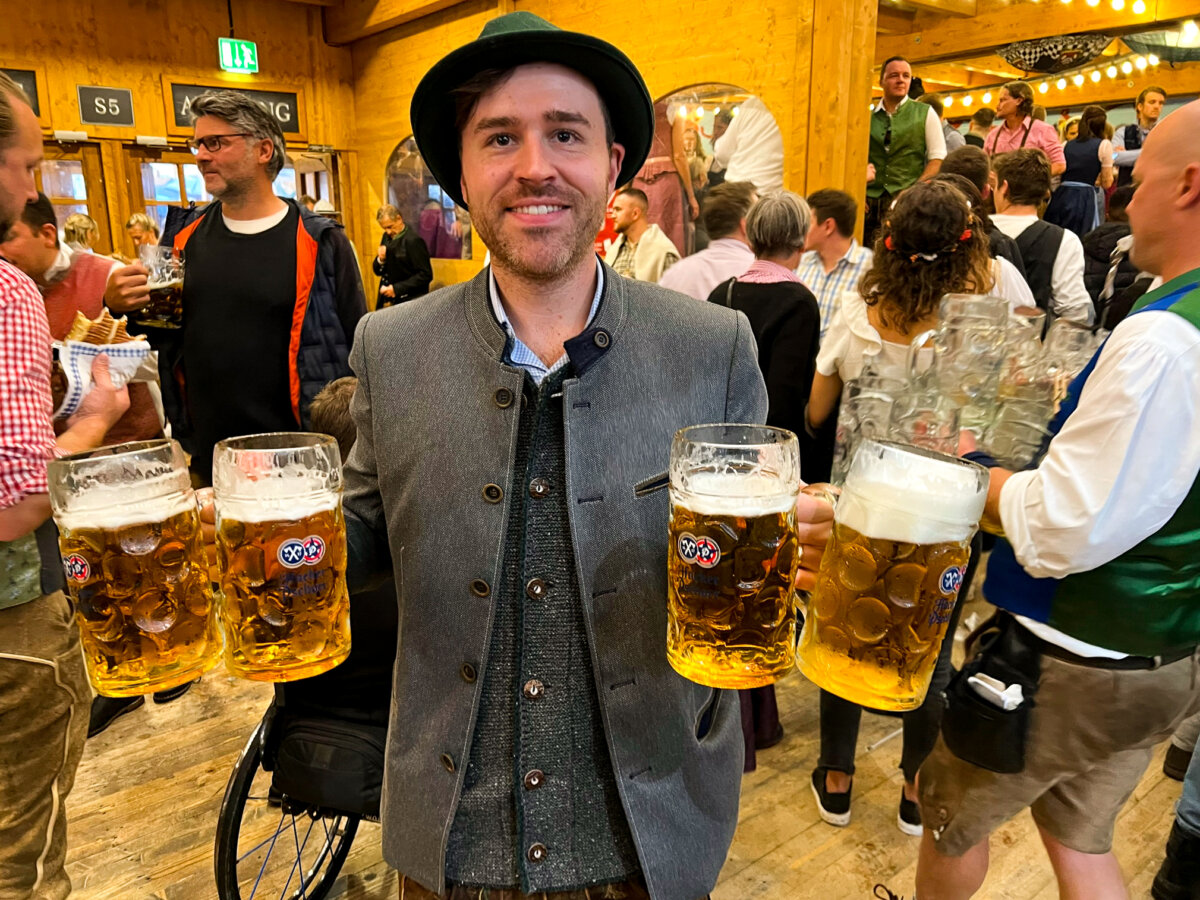
Germans are the world’s third-largest beer consumers, and the Czech Republic is the leader by a wide margin. Because of this, it’s not hard to see why Germany boasts many beer gardens, over 1,300 breweries country-wide, and over 5,000 different brands of beer. Almost half of these breweries are in Bavaria, making it a top vacation option for beer connoisseurs.
Germany is indeed the fatherland of beer and brewing traditions. The oldest brewery in the world that produces beer can be found in Germany.
It’s a Benedictine Abbey called Weihenstephan that has existed since 725 and has been brewing beer since 1040. You’ll find many top-tier German beers started life off at beer-producing monasteries.
The German Beer Purity Law

The German purity law for brewing beer is the oldest standing food safety law, adopted in 1516, that limits beer brewing to use only barley, hops, water, and yeast in production. This ensures the best quality and a strong worldwide reputation for quality beer.
The advent of dark lager beer was responsible for another law and piece of beer culture. When the beer was created, it was decreed that it could only be brewed during certain months and had to be kept in cellars underground.
In order to ensure that the drinks were kept cold, brewers planted trees to shade the cellars and ended up putting benches under the trees for their customers to sit and drink. This was the start of the traditional German Biergarten, or beer garden, which has been copied worldwide.
Most Popular German Beer Brands
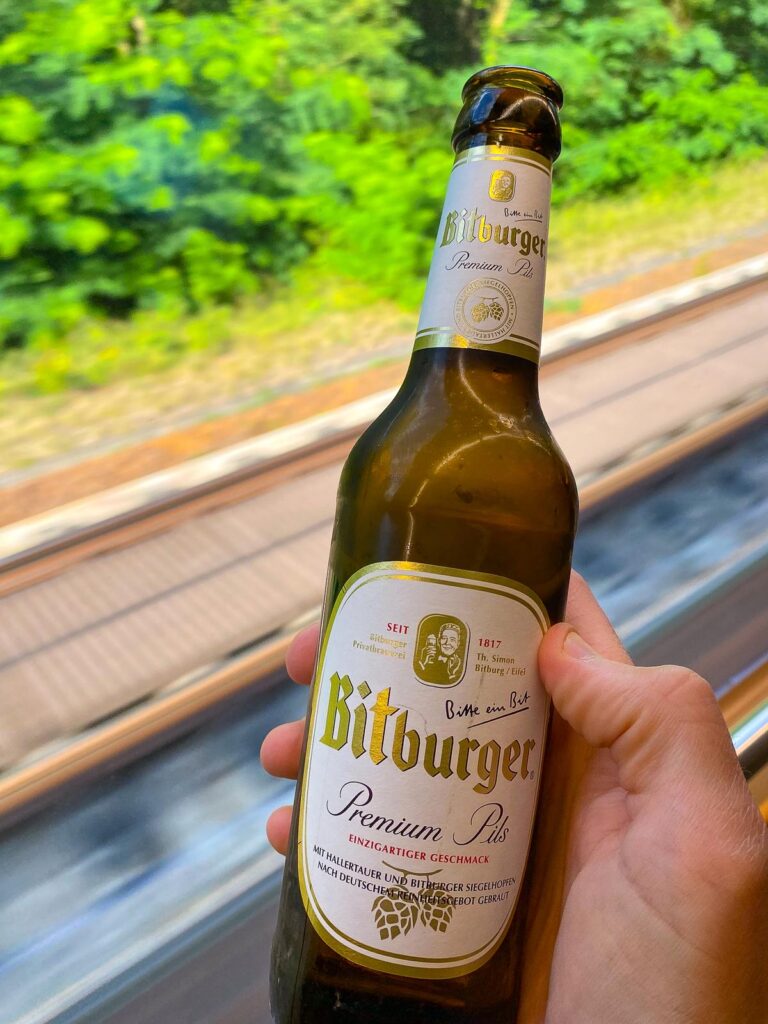
There are many beer brands in Germany, but the most popular brand is Krombacher. This brewery produces over 50% of all the German beer sold within Germany. Other popular German brews include Beck’s and Warsteiner, prominently featured at many events and festivals.
Even though German brews are not the most popular worldwide, these beers remain incredibly popular in Germany and other German-speaking countries like Austria and Switzerland.
| Brand | Type | ABV | IBU | Color |
|---|---|---|---|---|
| Paulaner | Hefeweizen | 5.5% | 14 | 6 SRM |
| Weihenstephaner | Dunkelweizen | 5.3% | 14 | 18 SRM |
| Ayinger | Oktober Fest-Märzen | 5.8% | 24 | 10 SRM |
| Schneider Weisse | Aventinus | 8.2% | 16 | 18 SRM |
| Augustiner Bräu | Munich Helles Lager | 5.2% | 18 | 4 SRM |
What are the most popular German beer styles?

Germany boasts over 1,300 breweries, the most in any single country worldwide. Every German state has breweries, with the most found in Bavaria, which is often considered the heart of Germany’s craft beer world and German culture.
The most popular beer drunk in Germany is typically Pilsner, a type of pale lager. Pilsners originated in the Czech Republic, but they have been fully embraced by the German populace, making up more than half of the beer consumption in the country. These beers are known for their crisp, clean taste and light golden color.
Beer Festivals in Germany
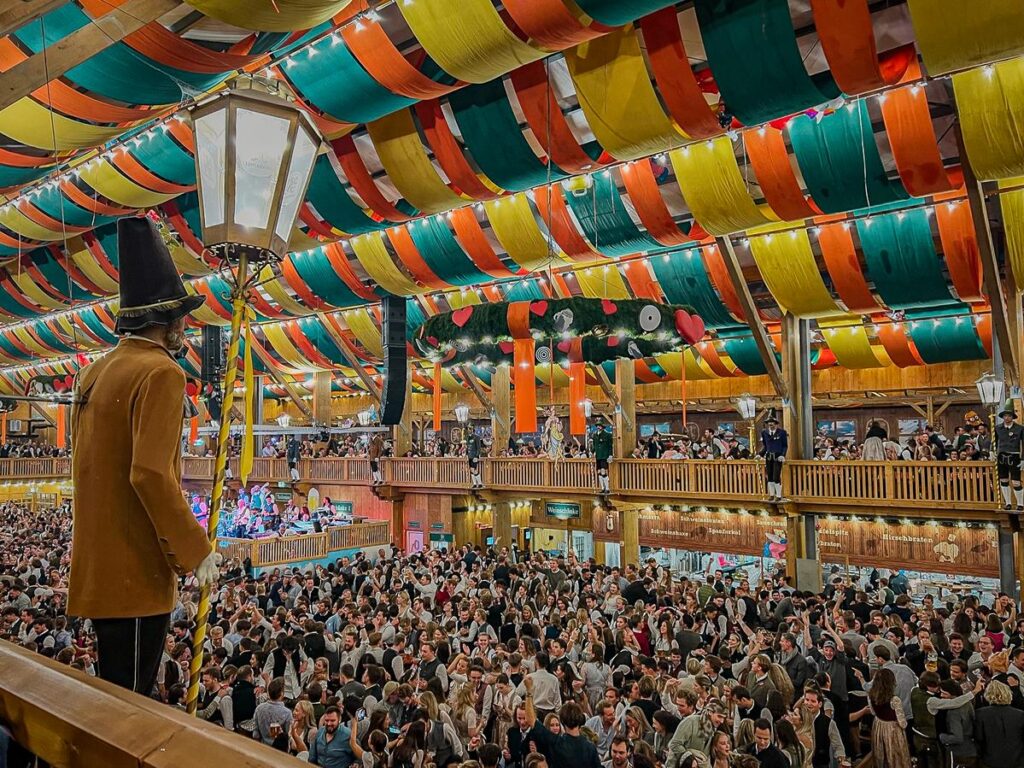
In Germany, beer seems to be a staple drink at many celebrations, the most famous being Oktoberfest. Oktoberfest is a German event that has been popularized around the world. The event lasts between 16 and 18 days, from late September through early October. Oktoberfest beers tend to be called fest beers, specifically brewed for this incredible festival.
Oktoberfest has stringent requirements for what kinds of beer can be served. Moreover, a group called the Society Against Dishonest Pouring has existed for centuries and patrols drinking events like Oktoberfest to ensure that people receive the amount they have paid for.
It’s worth staying nearby the venue of Theresienwiese for the utmost convenience and for an easy ‘rest stop’ between visits to the event. BEYOND by Geisel is an adults-only hotel with easy metro access to and from Theresienwiese.
But if you can’t make it to Germany in time for an Oktoberfest beer, don’t fret! There are many celebrations in Germany where drinking takes center stage. For example, Munich hosts ‘Starkbierfest’ each spring, focusing on strong, intense beer with alcohol percentages of 7% and above.
See Related: Oktoberfest: History & How to Celebrate in German Tradition
How to Drink Beer the German Way
Steins
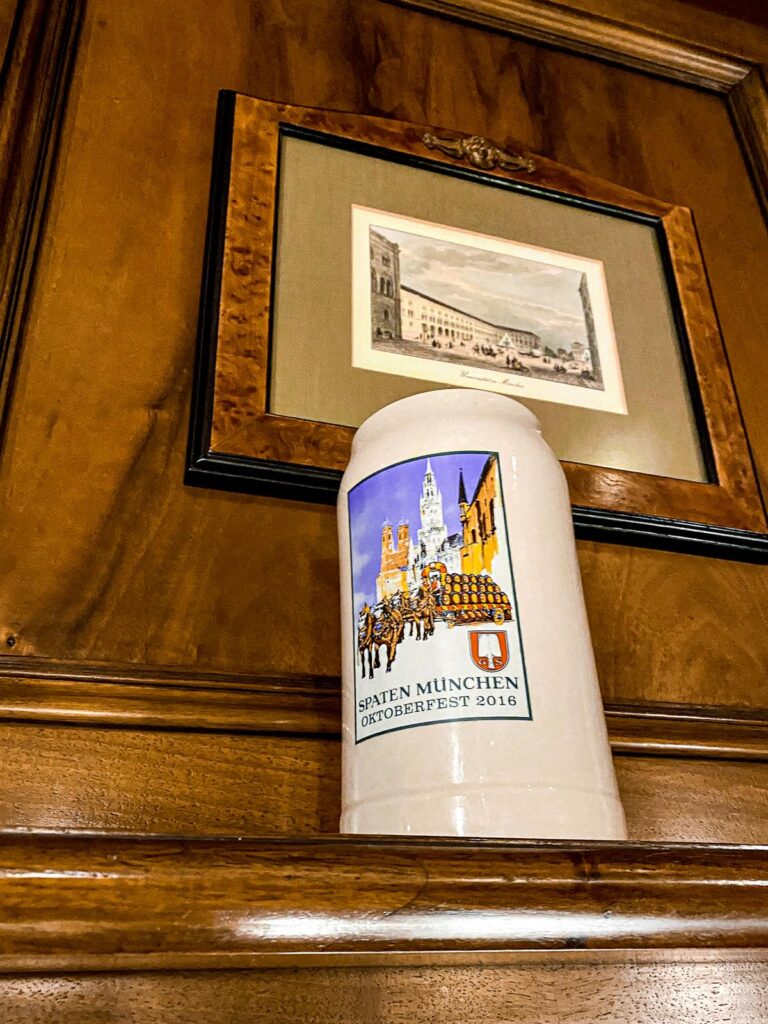
Germany, and collecting them is a fun way to participate in the culture and heritage of this incredible country.
One should first look at German gift stores when searching for steins. The reason is that they carry both Germany-themed Beer Mugs and Stein for buyers. In addition, these German gift shops also offer a mix of German phrases inscribed on the mug or stein.
Read Also: Les bouquinistes de la Seine: Cultural Heritage Profile
Beer Boots
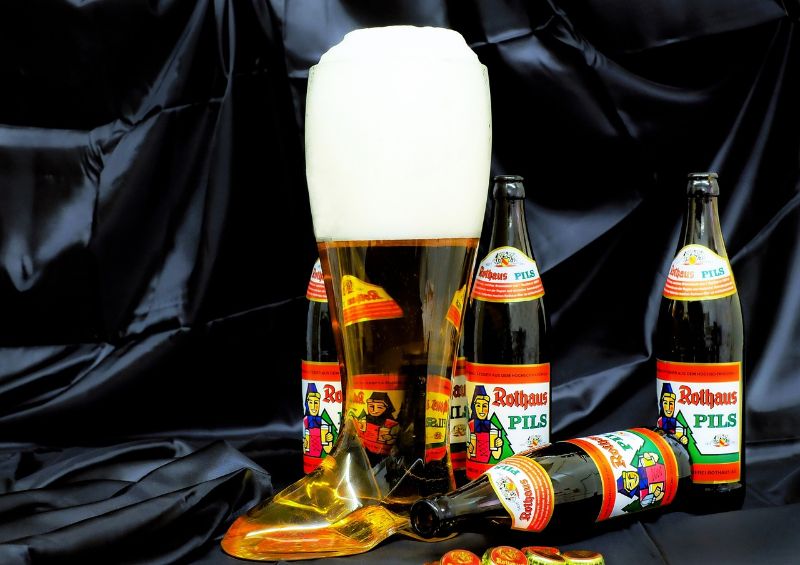
Beer boots are said to have sprouted after a German general told his troops that he would drink beer from his boot if they were successful in battle.
When they were victorious, he had a glassmaker create a glass boot for him to drink from, and beer boots have been popular among German soldiers and in beer-drinking challenges ever since.
Drink out the appropriate glass
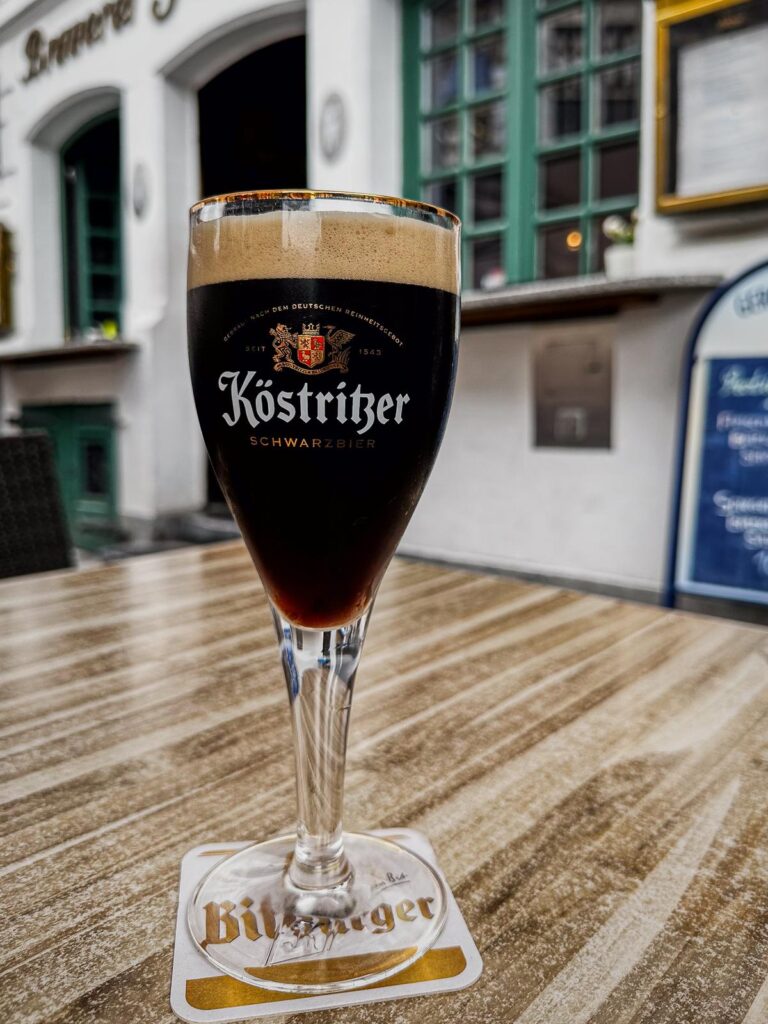
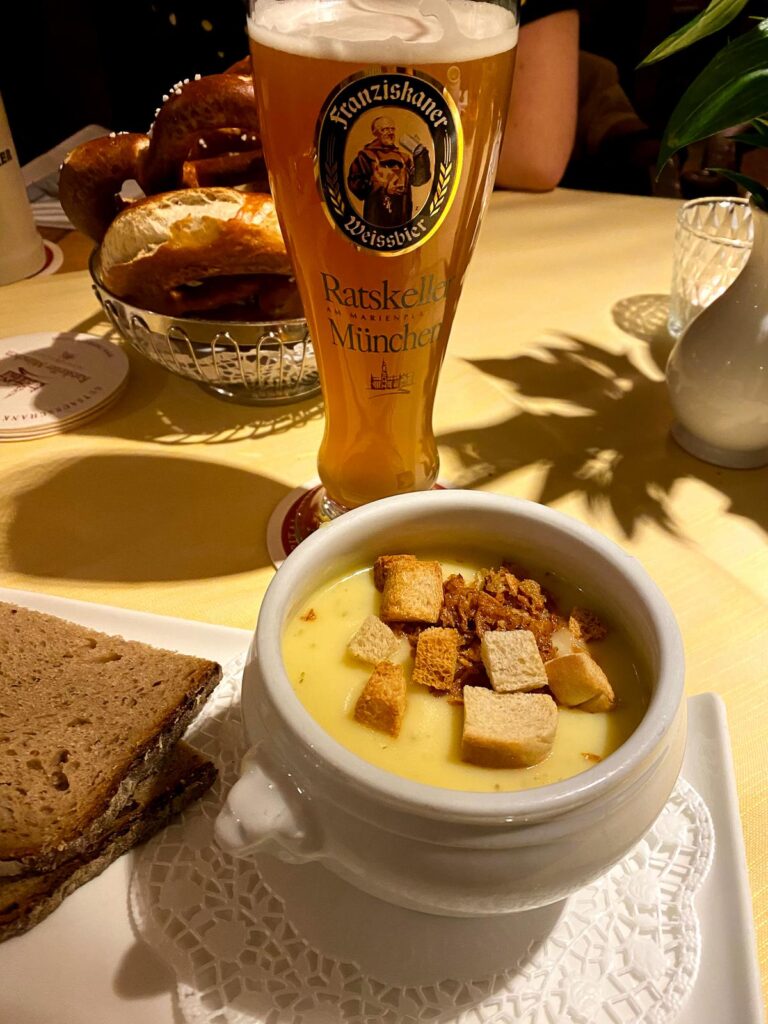

Drinking beer from the appropriate glassware is an essential part of the experience and taste. Different beer styles are served in specific glasses designed to enhance the beer’s flavor, aroma, and appearance.
For example, a Pilsner is typically served in a tall, slender glass that showcases its clarity and carbonation. In contrast, a Hefeweizen is served in a tall, curved glass that allows room for its fluffy head and captures its fruity and spicy aromas.
Using the correct glassware demonstrates respect for the beer and the brewing tradition and is a key aspect of German beer culture.
FAQs
How do you say beer in German?
‘Beer’ in German is ‘Bier’ /biːɐ/ and pronounced as Bi-Ya. Remember this for your trip to Germany to order the best local brews.
What is the best German beer?
With the boundless options of German styles to pick from, where do you start? Many would say wheat beers are the best beer brewed in Germany. Weihenstephan Hefe Weissbier, a beer with a touch of Bavarian-style wheat brew, and the Spaten Oktoberfest, a Herman beer traditionally brewed to perfection, are both sound choices.
Where can I buy German beer?
With the country’s abundance of great beers, the number of pubs and bars serving authentic beer is everywhere and relatively inexpensive. German beers can be bought from pubs scattered across the country, but you’ll also find many export beers like Becks abroad, and of course, there’s always the online option.
How to ask for a beer in German?
The right way to ask for a beer in Germany is to say ‘Ich möchte,’ which means ‘I’d like,’ or say ‘Ich hätte genre,’ which means ‘I’d like to have.’ Then, as you’ve learned from this article, there are many types to choose, so make sure you ask for the specific type you want to try out!
What are common types of German beer?
There is an extensive array of beer to taste in Germany, but the standard types of malt Pilsners by Helles reign supreme. However, other typical beers include the Schwarzbier, a light ale to drink, and the Rauchbier, made in barley malt and rich in smokey flavor.
Related German Brewery Guides
Related Resources
Please sign in to leave a comment.
